JOÃO MARIA GUSMÃO & PEDRO PAIVA “PAPAGAIO” – HANGARBICOCCA – MILAN
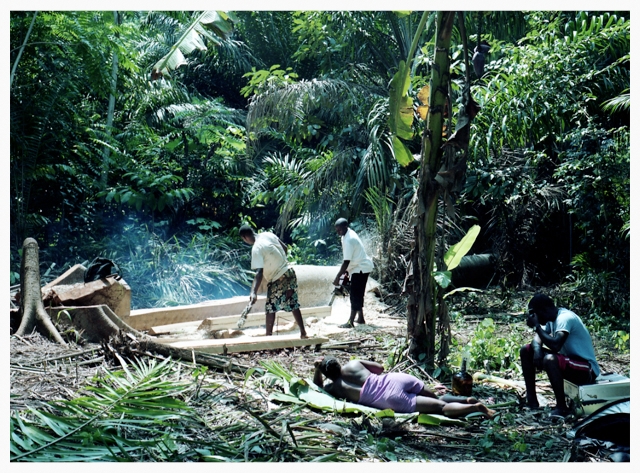
HangarBicocca
João Maria Gusmão & Pedro Paiva
“Papagaio”
12 June – 26 October
Thursday – Sunday – 11 am-11 pm
admission free -Opening 7 pm
www.hangarbicocca.org – info@hangarbicocca.org – T. +39 0266111573 – Via Chiese 2, 20126 Milano
Trentasei film, molti mai visti prima, tre installazioni e un piccolo cinema danno forma a un caleidoscopio di immagini sorprendenti, capaci di aprire una nuova percezione del mondo
Pirelli HangarBicocca presents Papagaio:
an exhibition of the cinematic universe of João Maria Gusmão and Pedro Paiva
Thirty-six films, many never screened before, three installations and a small cinema create a kaleidoscopic vision, with striking images that introduce a new way of perceiving the world
12 June – 26 October 2014
Opening Wednesday 11 June
Pirelli HangarBicocca presents Papagaio, an exhibition curated by Vicente Todolí and devoted to João Maria Gusmão and Pedro Paiva, the artistic duo that have come to the fore during the past decade for their ability to use the language of cinema in a totally new way. The retrospective (12 June – 26 October 2014) includes thirty-nine works that together form a veritable kaleidoscope of images, a “poetic-philosophical” narrative as the artists themselves call it. Through these works they investigate the most inscrutable fragments of reality and bring to life a realistic world of the imagination with visions that are at times documentary, at times para-scientific.
The exhibition includes thirty-six films, of which ten are new productions, and three Camera Obscura installations, including one never seen before, as well as the reproduction of an actual small scale cinema. The works, which have been made especially for HangarBicocca clearly illustrate the huge effort that the Milan-based institution is carrying out to promote contemporary art.
The exhibition appears to the public as a giant installation which contains the cinematic creations of these two artists, with works made between 2004 and 2014, grouped together by the themes and conceptual structures of their research. Viewers are also invited to move freely around the space, to give them a dynamic experience, letting them find points of view that are always different, because perceptions change with shifts in perspective.
The films screened in the exhibition space are mute, on 16 mm film. Most of them are in slow motion, consisting of short films in which the mechanical noise of the projector is the only background sound.
The films include Eye Eclipse (2007), which was shown at the Abissologia (Cordoaria Nacional / Galeria ZDB, Lisbon, 2008), inspired by similarities between the eye, the egg and the moon. There will also be two films made by the artists to represent Portugal at the 53rd Venice Biennale in 2009: The Soup (2009), in which a group of monkeys grab potatoes from an improbable sort of pot filled with boiling water, and 3 Suns (2009) which takes inspiration from one of Isaac Newton’s first optical
experiments to study the impression of images on the retina.
Three installations using a camera obscura projection are also included in the exhibition. These are environments in which moving images are projected, showing the artists’ interest and research into the origins of cinema and into the dynamics of perception: Motion of Astronomical Bodies (2010), Camera Inside Camera (2010) and Before Falling Asleep, a pre-cortical image inside a moving train (2014).
The new works created specially for HangarBicocca include a small cinema in which a new film, Papagaio (2014), which gives the exhibition its title, is screened. It was shot in the archipelago of São Tomé e Princípe, a former Portuguese colony in the Gulf of Guinea. The film, which is over 40 minutes long (an unprecedented length for the artists, who have so far only made shorts), was shot during an animist ceremony that recalls the voodoo practices of tribes along the coast of West Africa. The event, which is filmed in its entirety, in some cases by the protagonists themselves, includes dances and banquets, and culminates in a state of collective trance in which, according to animistic beliefs, bodies are possessed by the spirits of the dead. The film gives an indication of the artists’ long research in former Portuguese colonies, which are well suited for approaching and understanding experiences and images that have not yet entered the codes of representation and conduct that are typical of Western culture. The artists’ works contain no explicit moralistic interpretations of colonialism, but the very representation of these contexts clearly points to the symbolic violence of colonialism.
The works of João Maria Gusmão and Pedro Paiva generally have strong links to the origins of cinema and to the experimental films of the 1960s and 1970s, with analyses of the mechanisms of vision related to the study of optics and perception, and with the cerebral processes of receiving and processing images. Their films also reveal the influence of the traditions that were at the heart of early cinema: on the one hand the documentary tradition of the Lumière brothers, Auguste Marie Louis Nicolas (1862-1954) and Louis Jean (1864-1948), whose work concentrates mainly on showing everyday life and reality without any interpretation of the event being filmed; on the other, more predominant side, there is the “magical” tradition attributed to Georges Méliès (1861-1938), who is widely regarded as the “father” of special effects, and who was the true inventor of science-fiction and
fantasy films.
With their Camera Obscura installations, which are like cinemas made solely of light and objects, without the use of film, the artists create motion pictures that emerge from dark, enclosed spaces that are not accessible to the viewer. They use these devices to recreate the retinal principle of vision, revealing the mechanism by which images are impressed on the retina in reverse before being reprocessed by the human brain.
João Maria Gusmão and Pedro Paiva are inspired by a complex universe of cultural references that are at the heart of their work. These range from philosophy to literature, to the natural sciences and physics. They take inspiration from authors like the philosophers Henri Bergson and Friedrich Nietzsche, the poet Fernando Pessoa and the writers Victor Hugo, Jorge Luis Borges and René Daumal. Another important figure is Alfred Jarry (1873-1907), a French writer, playwright, poet and the creator of “pataphysics”, which is defined as “the science of imaginary solutions” in his novel Exploits and Opinions of Doctor Faustroll (1898). Here Alfred Jarry explains the principles and purposes of pataphysics, defining it as a science for which truths are never absolute but only relative and forever changing. All its proven principles can be affirmed and contradicted, in line with the artist’s absolute creative freedom.
The title of the exhibition: Papagaio
The Portuguese title, Papagaio, refers to one of the most important themes of the exhibition: glossolalia, or “speaking in tongues”. More precisely, it refers to those phenomena, which are often found in religious rites, in which words are spoken in unknown languages, or simply through vocalisations and meaningless syllables. The parrot (which appears in one of the new works) is filmed at extremely slow speed as it pronounces incomprehensible words, becoming a metaphor for man’s vain attempt to project his own image onto animals.
The artists
João Maria Gusmão (Lisbon, 1979) and Pedro Paiva (Lisbon, 1977) work together, producing films, sculptures, photographs, installations and anthologies of texts. They first met during the third year of the painting course at the University of Lisbon and started working together in 2001, when they put on the InMemory exhibition at the Galeria Zé dos Bois in Lisbon, an institution with which they still cooperate. Over the years, the works of Gusmão and Paiva have developed along three lines which have macro themes in common. These are what the artists themselves call DeParamnésia, Eflúvio Magnético and Abissologia.
Alongside their work as visual artists, they also published a philosophical journal called Eflúvio Magnético. Many notable institutions, including the Kunsthalle Düsseldorf and Le Plateau in Paris (2011) have put on solo exhibitions of their works. They have taken part in international events and exhibitions such as the Gwangju Biennale (2010), Manifesta (2008) and the Sao Paulo Biennale (2006). They also represented Portugal at the Venice Biennale in 2009, where they were also invited to the main exhibition in 2013.
The exhibition programme at Pirelli HangarBicocca
The Papagaio exhibition by João Maria Gusmão and Pedro Paiva is part of the exhibition programme curated by Vicente Todolí together with Andrea Lissoni. The event is presented in conjunction with the exhibitions by Cildo Meireles, on show until 20 July 2014, and Joan Jonas (from 25 September 2014).
The Pirelli HangarBicocca calendar will continue with exhibitions by Céline Condorelli (December 2014), Juan Muñoz (March 2015), Damián Ortega (April 2015) and Philippe Parreno (September 2016).
Pirelli HangarBicocca
HangarBicocca, the Pirelli contemporary art space, is the natural continuation of a long tradition of emphasis on culture, research and innovation that has been an essential part of the company ever since it was founded over 140 years ago. Thanks to the commitment of Pirelli, HangarBicocca offers the public a prestigious programme and a whole series of activities for children and families, making it a centre of attraction for Greater Milan and for an international public.
Data sheet
Artists João Maria Gusmão and Pedro Paiva
Title Papagaio
Curated by Vicente Todolí
Opening Wednesday 11 June 2014, 7 p.m.
Dates from 12 June to 26 October 2014
Partner Eni
Place HangarBicocca
Address Via Chiese 2, Milano, Italy
Opening hours Thursday – Sunday, 11 a.m.-11 p.m.
Admission Free
Workshops Every weekend, for children (11.15 a.m.-3.30 p.m.)
Phone for the public +39 – 02 6611 1573
Info for the public info@hangarbicocca.org | www.hangarbicocca.org
Press Office
Angiola Maria Gili | tel. +39-3356413100 | angiola.gili.ex@hangarbicocca.org
Stefano Zicchieri | tel.+39-3346160366 | stefano.zicchieri@h

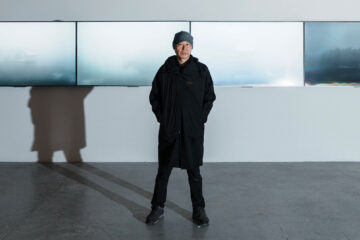
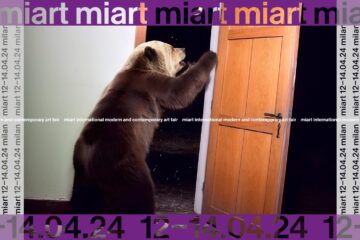
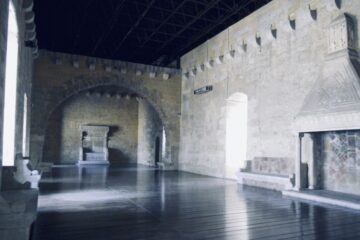
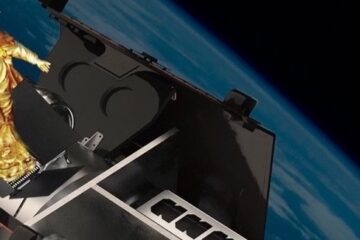

No Comment